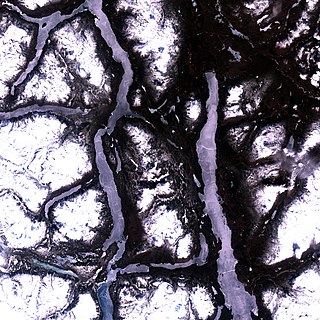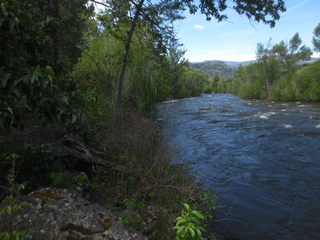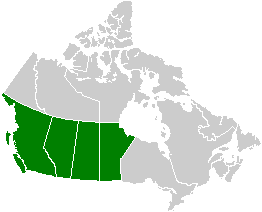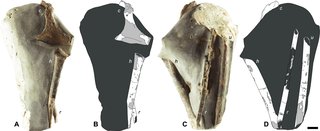
Atlin Lake is the largest natural lake in the Canadian province of British Columbia. The northern tip of the lake is in the Yukon, as is Little Atlin Lake. However, most of the lake lies within the Atlin District of British Columbia. Atlin Lake is generally considered to be the source of the Yukon River although it is drained via the short Atlin River into Tagish Lake. Atlin Lake was named by the Tlingit First Nation people of the region.

Monarch Mountain is one of the principal summits of the Pacific Ranges subdivision of the Coast Mountains in southern British Columbia. It stands just east of a pass between the Klinaklini River and the south branch of the Atnarko River, which is a tributary of the Bella Coola River. Surrounding Monarch Mountain is the Monarch Icefield, the northernmost of the major icefields of the Pacific Ranges, and just south of it is the Ha-Iltzuk Icefield, which is the largest. Monarch is in the southern end of Tweedsmuir South Provincial Park.

Vaseux Lake Provincial Park is a provincial park located along the northeastern shore of Vaseux Lake in the Okanagan region of British Columbia, Canada. The park is situated 4 kilometres (2.5 mi) south of Okanagan Falls on Highway 97 in the south Okanagan. The park plays a key role in educating and providing access to important conservation values and has a responsibility to maintain these activities.
Christina Lake Provincial Park is a provincial park in British Columbia, Canada. The lake it's on, Christina Lake, is renowned as the warmest lake in Canada.
Eagle Bay Provincial Park is a provincial park in British Columbia, Canada which covers 262 hectares of land.

Inkaneep Provincial Park is a provincial park near Oliver, British Columbia, Canada, located just south of the town of Okanagan Falls. The park contributes to the protection of critical riparian values on the Okanagan River. The park is popular with naturalists, particularly bird-watchers. First Nations have identified the river and riparian area of the park as very important contributor to the long-term viability of the Okanagan River salmon run.
Monte Lake Provincial Park is a provincial park in British Columbia, Canada, located on the east side of Monte Lake and to the south of the community of Monte Lake, British Columbia which is at the north end of the lake. About five hectares in size, it protects an area of Ponderosa pine and grasslands.
West Lake Provincial Park is a provincial park in British Columbia, Canada.
White Pelican Provincial Park is a provincial park in British Columbia, Canada and is located 31 km northeast of Alexis Creek.

Stemwinder Provincial Park is a provincial park located just west of Hedly in British Columbia, Canada. The park is 4 hectares in size, and provides public access to the Similkameen River.
The Ecclesiastical Province of British Columbia and Yukon is one of four ecclesiastical provinces in the Anglican Church of Canada. It was founded in 1914 as the Ecclesiastical Province of British Columbia, but changed its name in 1943 when the Diocese of Yukon was incorporated from the Ecclesiastical Province of Rupert's Land. The territory covered by the province encompasses the civil province of British Columbia and Yukon. There are five dioceses and one "recognized territory [with] the status of a diocese" in the province:

The University of British Columbia Press is a university press that is part of the University of British Columbia. It is a mid-sized scholarly publisher, and the largest in Western Canada.
Grant Main is a Canadian rower, who was a member of the Canadian men's eights team that won the gold medal at the 1984 Summer Olympics in Los Angeles, California. He also competed at the 1988 Summer Olympics. From March 2014, Main served as the Deputy Minister of the British Columbia Ministry of Transportation until his retirement in November 2020.
The BC Geographical Names is a geographic name web service and database for the Canadian province of British Columbia run by the Base Mapping and Geomatic Services Branch of the Integrated Land Management Bureau. BCGNIS is the master database of B.C. place names. The database contains approximately 50,000 current and former official names and spellings of towns, mountains, rivers, lakes, and other geographic places in British Columbia. About 50% of the names have brief notes about the history of the geographic names, and their use in history.

Volcanism of Western Canada has produced lava flows, lava plateaus, lava domes, cinder cones, stratovolcanoes, shield volcanoes, greenstone belts, submarine volcanoes, calderas, diatremes and maars, along with examples of more less common volcanic forms such as tuyas and subglacial mounds.
Palliser Pass, 2,084 m (6,837 ft), is a mountain pass in the Canadian Rockies, located on the British Columbia / Alberta boundary at the south end of Banff National Park and at the north end of Height of the Rockies Provincial Park in British Columbia. The pass is located north of the headwaters of the Palliser River.

Skaha Bluffs Provincial Park is a provincial park in British Columbia, Canada. Skaha Bluffs lies within the asserted territory of the Okanagan Nation Alliance. World-class climbing opportunities are found at Skaha Bluffs, recreational climbing has been occurring in the area since the 1980s.

Solander Island Ecological Reserve is a 7.7 ha protected area on an island 1.5 km (0.9 mi) west of Brooks Peninsula Provincial Park off the northwest coast of Vancouver Island in British Columbia, Canada. It was established in 1971. The reserve is closed to the public to protect the habitat of nesting seabirds.

Maaqwi is an extinct genus of large marine diving bird from the Late Cretaceous of Hornby Island, British Columbia, Canada. The genus name Maaqwi comes from the Coast Salish "ma'aqwi" meaning "water bird," and the specific epithet cascadensis reflects the fossil's origin from the Cascadia region of Western North America. The genus is known from a single specimen, RBCM.EH2008.011.01120. It consists of a coracoid, humerus, ulna, and radius in a nodule of mudstone. The specimen is housed in the Royal British Columbia Museum. Maaqwi had an estimated body mass of 1.5 kg.









